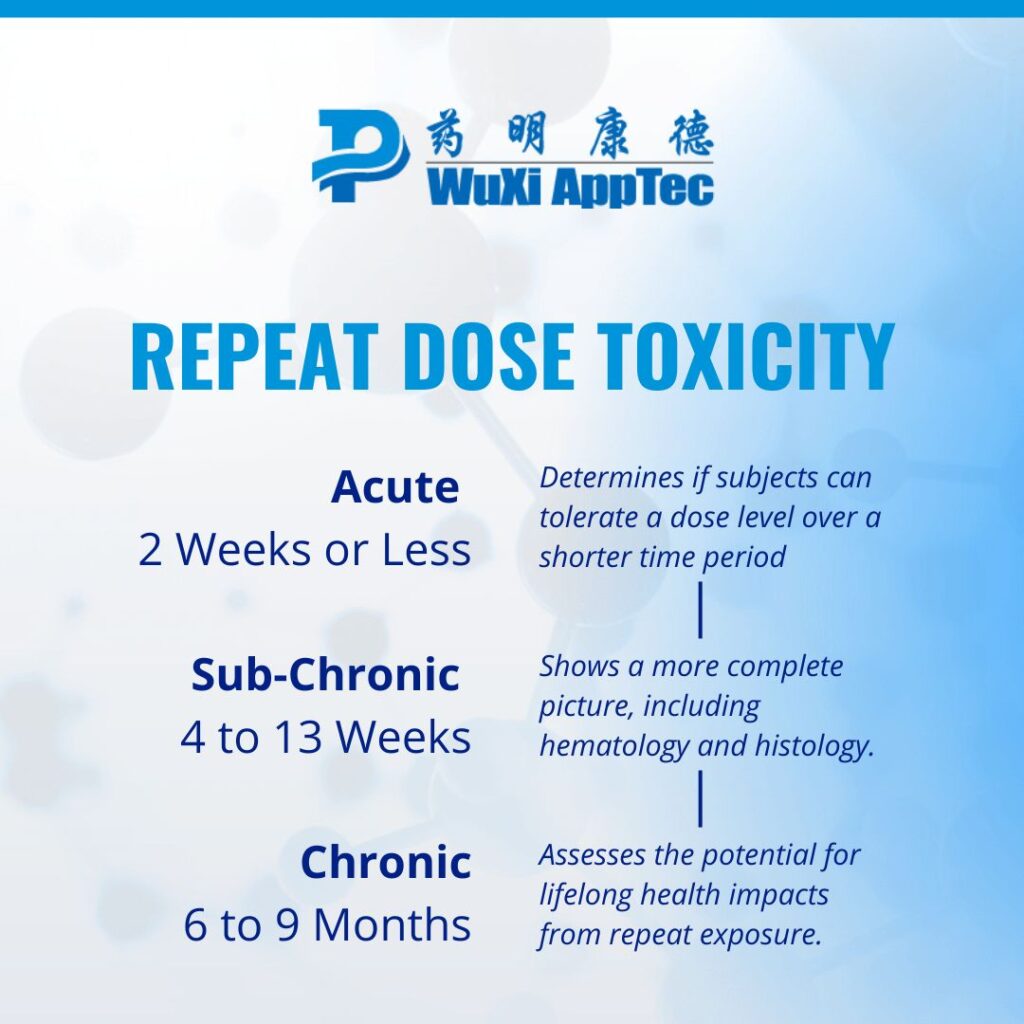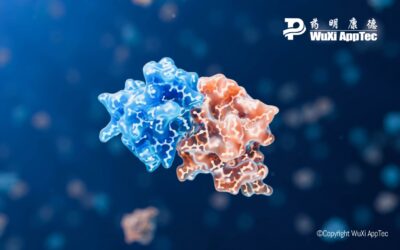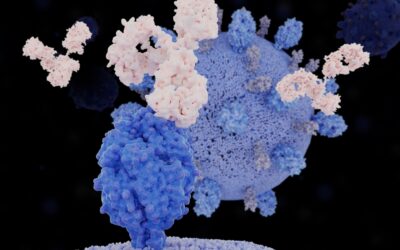Repeat dose toxicity studies evaluate the effects of repeat administration over a defined period of time. To get the right toxicity data, what is the right duration for your compound? This blog discusses three possibilities.
Toxicity data from repeat dose studies helps researchers deepen their understanding on the potential target organs of toxicity, exposure, and potential toxic effects of a compound. To get these data, researchers expose animals to repeated doses of the compound and monitor for signs of toxicity over the course of time. These studies represent the pivotal IND-enabling studies after your initial dose range finding studies, and they are essential for the quantitative risk assessment of a drug molecule.
The duration of repeat dose toxicity studies must be informed by the duration, indication, and scope of your clinical plan while staying in the bounds of regulatory guidance. The U.S. FDA’s “M3(R2) Nonclinical Safety Studies for the Conduct of Human Clinical Trials and Marketing Authorization for Pharmaceuticals” outlines recommended duration of repeat dose toxicity studies. In general, toxicity studies must be conducted in one rodent and one non-rodent species with a duration that is equal to or exceeds the duration of the human clinical trial.
With this guidance in mind, here are three possible timeframes you might encounter when planning your toxicology program.
3 Repeat Dose Toxicity Study Durations

#1. Acute Toxicity Studies
Acute studies assess the effects of a drug after it’s administered over a short duration – that is, two weeks or less. The FDA says that acute studies in 2 species “for a minimum duration of 2 weeks would generally support any clinical development trial up to 2 weeks in duration.” Maximum Tolerated Dose (MTD) studies fall into this category, which are used to determine the highest dose tolerated over multiple doses.
There are many options for completing these acute repeat dose toxicity studies to get an idea for how a subject will respond after multiple doses – whether you start with a single dose across a few subjects or multiple dose levels across a few subjects. The goal is to escalate to where you get clinical observations that would prohibit that dose from being used over repeated time frames in future studies.
#2. Sub-Chronic Toxicity Studies
Sub-chronic studies extend the evaluation period beyond the acute phase, ranging from 4 weeks (28 days) to 13 weeks (3 months). These studies support clinical trials up to 13 weeks.
Typically, a 28-day study is conducted to support clinical dosing. Depending on the clinical dosing regimen, you may need a follow-up 13-week study. If so, your 28-day study will support dose selection for the longer 13-week study.
While acute studies help you determine if subjects can tolerate a dose level over a shorter time period, sub-chronic studies start to get more complex. Because they are longer, they give you a more complete picture of toxicity. Through sub-chronic studies, you will examine areas including:
- Clinical chemistry
- Hematology affects
- Clinical observations
- Histology
#3. Chronic Toxicity Studies
Chronic toxicity studies are conducted over an even longer time period, often 6 to 9 months. Generally, 6-month rodent and 9-month non-rodent studies support clinical dosing for trials over 6 months. These are especially relevant for assessing the potential for chronic diseases.
Studies that last even longer (i.e., 1-2 years) are considered carcinogenicity studies. Consider your clinical program if and when carcinogenicity studies are required.
Conclusion
Repeat dose toxicity testing is a winding path of many options, and not all clinical programs require all segments. Plus, this all looks different when you deal with anything outside of standard small molecule development, like gene therapies and new modalities. Generally, though, a 28-day study will get you into Phase 1, and sub-chronic and chronic studies will allow you to proceed through subsequent clinical phases
The most important thing when it comes to toxicity testing is knowing your clinical plan. In fact, you can’t design your toxicity studies without an estimate of the dose level and dosing schedule planned for the clinic. This plan will inform selection of the dose levels needed for your toxicity studies.
Need help planning your toxicity studies and managing your timelines? WuXi AppTec’s Safety Assessment team offers fast study starts with a track record of 99% on-time reporting. Contact us to talk to an expert or get a quote to get started right away.
As a global company with operations across Asia, Europe, and North America, WuXi AppTec provides a broad portfolio of R&D and manufacturing services that enable the global pharmaceutical and life sciences industry to advance discoveries and deliver groundbreaking treatments to patients. Through its unique business models, WuXi AppTec’s integrated, end-to-end services include chemistry drug CRDMO (Contract Research, Development and Manufacturing Organization), biology discovery, preclinical testing and clinical research services, helping customers improve the productivity of advancing healthcare products through cost-effective and efficient solutions. WuXi AppTec received an AA ESG rating from MSCI for the fourth consecutive year in 2024 and its open-access platform is enabling around 6,000 customers from over 30 countries to improve the health of those in need – and to realize the vision that “every drug can be made and every disease can be treated.”


